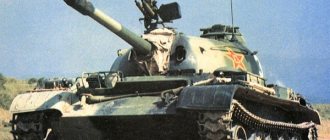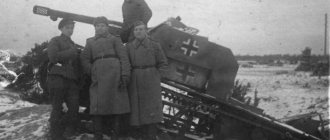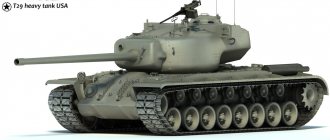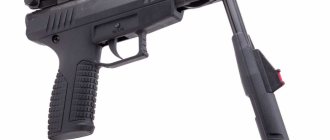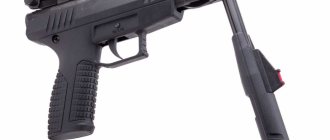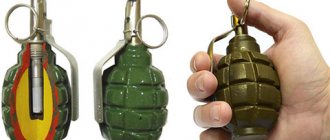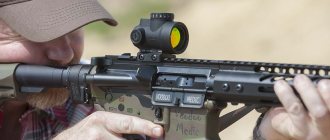And in this article we will look at what active armor is. Note that the topic is quite interesting and necessary. So, active protection is a system for shooting specific warheads connected to a local influence radar device. These systems are placed on tanks.
If a tank, for example, a T-72 with active armor, detects ammunition approaching it (anti-tank grenade launcher grenades and the like), the team launches a projectile, which explodes when it approaches a dangerous object. What happens next? A cloud of fragments is formed, either destroying or greatly weakening the effect of the dangerous object. It should be noted that scientists have also developed devices that work with protective charges that do not need to be launched.
In Russian federation
How did active tank armor come about? It was developed and implemented by Soviet weapons creators. The concept of active protection of iron machines was first voiced in one of the Tula design bureaus, around 1950. The first complex of the innovative invention “Drozd” was installed on the T-55AD tank, which the army received in 1983.
In general, “Drozd” is the world’s first design adopted for service and mass-produced. Its performance characteristics allowed the tank to be used without restrictions.
By the way, active armor significantly (twice or more) increases the endurance of iron giants.
In 1980, the Drozd system was modernized and received the Drozd-2 index. At the same time, the Arena active protection was developed, but due to the collapse of the post-Soviet space, it did not go into production in the same way as the updated complex.
The invention of the Arena active armor helped solve some problems. For example, previously, when an attacking warhead was destroyed, friendly infantry were hit by fragments of a rocket-propelled grenade or ATGM and anti-missile missile. And now the scattering of fragments (from top to bottom) and the trajectory of the protective block were calculated in such a way as to completely eliminate the continuous destruction zone and at the same time guarantee the destruction of the attacking missile.
Today the Kolomenskoye KBM KAZ is working on the Armata platform. Specialists are working hard on the Afghanit complex. They say that the design will have a millimeter-wave radar, and that an impact core will be used to eliminate targets instead of the traditional spatial fragmentation flow.
The intercepted target will likely move at a maximum speed of 1700 m/s.
KAZ called Scudo (“Shield”), Italy
The Italian defense company Oto Melara has been working on KAZ under the name Scudo (“Shield”) since 2002. The complex includes surveillance, detection and tracking sensors, an on-board control center, a threat assessment system and countermeasures. The sensors are installed on one rack for 360-degree coverage (similar to the Russian KAZ Arena), but can also be mounted separately on the vehicle itself. The Scudo's threat detection range exceeds 600 m. Having detected an incoming weapon, the KAZ launches two missiles that use a proximity fuse to throw a mass of tungsten balls into the front of the enemy's ammunition trajectory.
Foreign developments
What other countries developed active tank armor? It was created in France, USA, Germany and Israel. But the USSR suddenly collapsed, and all these attempts lost their relevance. In addition, military budgets were cut, and this led to numerous funerals of unique projects.
There is only one exception that can be noted - the Ukrainian Zaslon system. It was she who was brought to the level of existing models. Of course, by April 2010, the design had not yet passed state testing and entered service with the Ukrainian army, but it was very actively advertised for export.
I wonder how active armor works? For example, the Zaslon complex has interesting features - anti-missile warheads are not fired back, but are suppressed directly on the surface of the military vehicle. Also, according to the developers, the issue of eliminating warheads attacking from above has been resolved. Moreover, under the influence of an echelon fragmentation flow and a blast wave, warheads with a metal integral shell (BOPS) change their path. They either meet the base armor at an unfavorable angle, or go outside the area of the shielded object. It is these nuances that place this system in the category of universal protective equipment.
When armor is active, we will look further, but now let’s turn our attention to the West. In 2004-2006, Western countries began intensive development of active protective complexes. The Americans also accelerated the creation of such systems: they were forced to deal with the constant shelling of military convoys from RPG-7s in Iraq. In addition, the Lebanese Second War with the concentrated use of ATGMs and grenade launchers spoiled the nerves of the US leadership.
It is known that while in America the Quick Kill system still requires significant improvement, in Israel Trophy and Iron Fist are already in working order. When the 2006 war ended, experts decided to equip the Merkava-4 tank with the Trophy active protection complex (KAZ) (made in Israel). This system is capable of destroying ATGM/RPG shells that threaten the vehicle. That is why Mk.4 is the first foreign MBT with KAZ.
It should be noted that active protection was not installed on the first tanks simply due to insufficient funding. Serial production of “iron colossi” equipped with KAZ “Trophy”, designated “Merkava Mk.4M”, began in the last months of 2008. And already in 2009 they began to enlist in the army.
In general, the uniqueness of this Israeli complex lies in its automatic reloading. In addition, it can hit multiple objects at the same time.
Active protection complex MAPS, USA
They are equipped with M1A2 SEP v.3 tanks of four tank brigades, modernized this year according to the latest standard. According to the expert, the Israeli complexes were chosen as a temporary measure for the transition period, while the United States is developing its own promising KAZ with high characteristics. In the future, the US Army expects to increase the protection of its combat vehicles by installing a modular active protection complex MAPS (Modular Active Protection Systems) of its own design, which will fully meet the requirements of the present time and the expected threats of the future.
Scheme of operation of MAPS TARDEC / Lockheed Martin MAPS (USA)
The first tests of this system, according to official reports from Northrop Grumman and Lockheed Martin, were successful. The sample was tested at a test site using guided anti-tank missiles. 15 missiles of an unnamed type were successively launched at a conditional armored vehicle with the MAPS system. To counter ATGMs, a soft-kill class system was used - an electronic suppression station. Thanks to its work, all launched missiles deviated from the trajectory and passed by the protected object.
In accordance with the MAPS project, the KAZ being created will have an open, modular architecture. MAPS itself is a set of several data processing and control devices, and the complex does not include its own means of detection, suppression and destruction. They will be selected in accordance with the requirements and features of a particular armored vehicle.
It is proposed to use radar and optical-electronic surveillance and detection stations, newly developed or borrowed from existing KAZ. The situation is similar with means of destruction. They are not yet being developed specifically for MAPS - it is planned to borrow finished products from other projects. In the future, specialized systems may appear. To protect against incoming ammunition, a variety of devices of the soft-kill and hard-kill classes can be used - electronic and optical-electronic suppression equipment, protective ammunition and other products similar to the components of existing and future KAZ.
In the near future, for the next stage of testing, MAPS prototypes will be installed on armored carrier vehicles of production models. The tests should be completed by the end of the summer of 2020, and army armored vehicles, according to current plans, will receive MAPS in the early 20s.
The main equipment of the new KAZ MAPS: power supply, control device and operator console
Taking into account the fact that the German AMAP-ADS active protection system for armored combat vehicles is still under development, in 2022 the KAZ Trophy was tested on the Leopard-2 main battle tank. The Germans wanted to receive the first seventeen Leopards with active protection systems by 2022, and from 2023 the Bundeswehr wants to have at its disposal an entire division of tanks for use in the NATO Joint Task Force.
AMAP-ADS is being developed by the German IBD Deisenroth, and, according to the information provided, this complex requires only 560 microseconds for the entire protection procedure - from identifying to completely eliminating the threat. It is capable of hitting cumulative ammunition of close combat weapons such as RPG-7, ATGM, as well as armor-piercing sub-caliber projectiles of anti-tank weapons. The design of the complex is modular and can be adapted for a wide range of vehicles (for light wheeled vehicles the KAZ weight is about 140 kg, and for heavy vehicles it can reach up to 500 kg). AMAP-ADS prototypes have been tested on several combat vehicles, including Marder, SEP, CV90120 and AMV infantry fighting vehicles.
As a result of the use of KAZ, the survivability of a unit of ground equipment can increase by 2-3 times, which makes it possible to successfully complete a combat mission in the most difficult conditions.
M1A2 SEP v.3 tanks upgraded to standard receive KAZ “Trophy”
Problems
Many people say that if a tank’s armor is active, it will emerge victorious from any alteration. But all security systems have common shortcomings. It is unclear how the complex will work with significant shaking. Many ATGMs (for example, the FGM-148 Javelin) hit the roof of the tank, bypassing the protected perimeter. An explosion a few meters from the “iron giant” may damage equipment located on the roof. The protective system will probably also fail.
Also, the finite performance of the device with the need to recharge does not allow it to defend against multiple attacks from one side. It is this feature that was taken into account when developing the RPG-30, equipped with an advanced warhead that ensures the operation of the protective device at a distance safe for a rocket-propelled grenade.
KAZ GL5 Raptor, China
Experts from the Middle Kingdom . Currently, work is underway here on the KAZ under the designation GL5 Raptor. The complex allows you to detect anti-tank ammunition flying at speeds from 100 to 700 m/s at a range of up to 500 meters (minimum range 100 meters) in a 360-degree sector. If we compare the Chinese KAZ with other models, we can say that it looks more like anti-aircraft missile systems, and not like most traditional KAZ. The main module of the KAZ GL5 combines detection and data processing tools, and a launcher for defensive ammunition with 360-degree aiming capabilities is mounted on top of it. It is the launcher that gives the Raptor complex its resemblance to anti-aircraft missile systems. It is proposed to install one or several such modules on the host machine.
Chinese KAZ under the designation GL5 “Raptor”
History of creation
The T-54/55, a basic medium tank, was in service with the Soviet Union in the 1950s. The vehicle was constantly improved, its firepower increased, but its rifled 100-mm D-10T gun remained the same.
Until 1961, the D-10T fought only with small-caliber armor-piercing shells, and by 1950 it could no longer effectively defeat the new M48 medium tank (made in the USA). And Western tanks at that time were already using sub-caliber warheads with a detachable pallet and non-rotating cumulative warheads that pierced the armor of a Soviet tank at normal combat distances.
Two groups of Soviet tank builders of the 1950s worked on the creation of the T-62. The first was developing new weapons for medium tanks, and the second was implementing the initiative projects of the Uralvagonzavod Design Bureau - creating a promising medium tank to replace the T-54/55.
Interestingly, in 1958, the Uralvagonzavod design bureau completed work on the promising Object 140 tank. The initiator of the completion of the project was L.N. Kartsev, who held the post of chief designer of the plant. It was he who considered the new machine too low-tech and difficult to operate.
Anticipating such an outcome, experts simultaneously developed the Object 165 tank, which was a kind of hybrid consisting of the turret and hull of the Object 140, the combat section of the Object 150 and the engine-transmission part and chassis of the T-55. Factory testing of the product was completed in 1958: based on its results, the Ministry of Defense approved the project of the second version of the “Object 165”, even closer in structure to the serial T-55.
In addition to the Object 165, a large number of other promising medium tanks were developed in the 1950s. They were supposed to be armed with a new rifled 100-mm D-54 (U-8TS) gun, created in 1953. Compared to the D-10, the D-54 had 25% greater armor penetration, and the primary speed of its armor-piercing missile was increased from 895 to 1015 m/s. But these parameters were considered insufficient to successfully fight Western tanks, and more modern types of shells did not yet exist.
It should be noted that there were serious objections from the military regarding the presence of a muzzle brake on the D-54. This device, when firing, contributed to the formation of a snow, dust or sand cloud, unmasking the tank and interfering with observation of the results of the firing. In addition, many feared that the muzzle wave would negatively affect the tank landing and accompanying infantry.
Basic tank with active armor T-72B
I wonder what the T-72B tank with active armor is like? This product is from the 1985 version. It differs from its ancestors in the presence of a coordinated missile weapon system and powerful armor shielding of the turret. In addition, this vehicle is equipped with hinged dynamic protection, constructed from 227 containers, more than half of which are located on the tower.
It is known that the tank with active armor T-72B was designed during the period of modernization of the T-72A. The vehicle is the third generation of MBT: it is equipped with the Kontakt dynamic guard, an improved fire control system (has a two-plane 2E42-2 gun stabilizer for firing on the move) and a 9K120 Svir coordinated weapon system (equipped with a 1K13-49 guidance device). Modernization of the tower entailed an increase in weight to 44.5 tons.
T-90
What's good about the T-90's active armor? It is known that the T-90 “Vladimir” is the basic military tank of Russia. It was created in the late 1980s as a profound improvement to the T-72B tank, called the “T-72B modernized”. But in 1992 he entered the army under the designation T-90.
When V.I. Potkin (the main designer of the tank) passed away, the Russian government decided to give the T-90 the name “Vladimir”.
By the way, in the period from 2001 to 2010, the T-90 was considered the best-selling new MBT on the world market.
Interestingly, in 2010, the T-90 vehicle was purchased under contracts for the Russian Army at a price of 70 million rubles. By 2011, the cost of the T-90 had increased and amounted to 118 million rubles. Since the end of 2011, the purchase of T-90s for Russian troops has been stopped.
On September 9, 2011, the T-90SM, a new export model of the T-90 tank, was publicly shown at an international exhibition in Nizhny Tagil.
Mobility
One of the main factors influencing the combat qualities of a tank, and therefore the outcome of the battle, is mobility. An armored vehicle must be able to move across the battlefield at a given speed, regardless of unevenness or obstacles, thereby ensuring timely access to a firing position and achieving advantages over the enemy.
Israeli Merkava-4 tanks are equipped with General Dynamics GD883 diesel engines with a power of 1500 hp. The combat weight of the vehicle, depending on the configuration, exceeds 65 tons. Thus, the specific power of the tank cannot be higher than 23 hp. per ton. The engine is connected to an automatic hydromechanical transmission. The machine is equipped with a chassis with spring-based suspension. At the same time, there are means that protect the moving parts of the suspension from the negative effects of soil or stones.
Experienced T-90MS Photo: Wikimedia Commons
A V-92S2F diesel engine with a power of 1130 hp, connected to an automatic transmission, is mounted in the aft compartment of the T-90MS. As a result of the modernization, this tank weighs 48 tons, which makes it possible to obtain a specific power of at least 23.5 hp. per ton. The chassis with torsion bar suspension, traditional for domestic tank building, is again used, which does not require additional protection.
The T-90MS and Merkava-4 tanks differ little from each other in their specific power. However, the weight of the cars significantly affects their performance. Thus, an Israeli tank on the highway accelerates to 64 km/h, while a Russian one is capable of reaching 70 km/h. The T-90MS also has a significant advantage in range. It should be noted that the large mass of the Merkava-4 can impair strategic mobility, limiting the choice of routes for transferring such equipment. However, the peculiarities of the operation of the equipment and the IDF strategy make it possible not to encounter such problems. Israeli tanks were created taking into account operation only in their own region, and there are no plans to send them to other areas.
In general, from the available data it follows that the T-90MS is capable of demonstrating higher mobility characteristics, both on roads and on rough terrain. A well-trained crew will be able to use these advantages in combat to quickly reach an advantageous position.
Active Intercession
Does the T-90 have active protection? It has traditional armor, and also has dynamic protection. In addition, this vehicle is equipped with active protection constructed from the Shtora-1 optical-electronic suppression system. This device is designed to protect against the destruction of the iron giant by anti-tank coordinated missiles and is constructed from the Shtora-1 station and a device that forms a curtain.
By the way, Shtora-1 is designed to protect against missiles equipped with a self-loading guidance system. It is constructed of a pair of modulators, two infrared spotlights OTSHU-1-7 and a control panel.
Everyone knows that when protection is active, the armor is impenetrable. The device that forms the curtain counteracts guided warheads that are equipped with self-loading guidance along a laser beam or laser homing. This device also prevents the operation of laser rangefinders and the formation of a smoke screen.
This structure consists of a set of laser radiation indicators, constructed of two coarse and two fine direction sensors, a coordination device and twelve aerosol-filled grenade launch systems.
This is a truly unique invention - active armor. Its operating principle is as follows: if a tank is detected to be irradiated with laser radiation, the system that forms the curtains determines the direction of the emanating danger and notifies the crew. Next, either at the direction of the crew commander, or automatically, an aerosol grenade is fired, which creates an aerosol cloud that neutralizes laser radiation, disrupting the operation of the missile guidance systems. In addition, the new cloud disguises the iron machine, turning into a smoke screen.
"Afghanite"
So, let's continue to consider what active armor is. "Afganit" is an active defense system (ADS) for a tank. It was created by Russian specialists in the 2010s.
This device protects heavy armored vehicles from cumulative anti-tank missiles (ATGM and KS) and sub-caliber warheads.
Constructed from a radar unit, optical-electronic sensors and laser aiming devices, a pair of conversion units, a control panel, a computer, a set of cables, a distribution box, and protective weapons in the installation shafts.
Anti-ballistic protection is mainly located under the turret on the hull, so it is hardly vulnerable to most warheads, unlike other KAZ. This device has duplicated radar devices. It is equipped with a jamming system and has the ability to eliminate ammunition using an anti-aircraft machine gun and a basic AESA radar. By the way, such a protection scheme, in fact, can also be considered a separate independent complex.
The creators of “Afganit” acquired patent RU 2263268 for a defense device operating on the “nuclear strike” principle, which makes it possible to shoot down promising missiles at speeds of up to 3000 m/s. Today (before the end of state testing) attention is paid to the option with a target speed of up to 1700 m/s. Such a device will be able to intercept almost any warhead moving at maximum speed.
First of all, “Afganit” is an impact core, launched from a warhead being fired, first in the direction of attaching the missile container (directly), then in any direction. The device is capable of effectively destroying attack targets of all types. The turret also contains two types of ammunition, sheltered from lateral influences, necessary for jamming, which disguises the tank at the time of attack from various modern anti-tank missiles.
By the way, the AFAR radar is an independent system.
It is impossible to destroy. Umbrella for armored vehicles - active protection
In the centuries-long duel between projectile and armor, the last one by the middle of the 20th century. was clearly losing ground. And with the advent of cumulative anti-tank grenades and anti-tank guided missiles (PG and ATGM), conventional homogeneous armor of almost any real thickness was no longer able to provide the tank with invulnerability. Today, ATGMs are tough even on steel armor more than 1,000 mm thick, which is impossible to attach to a tank, since as a result it will lose all its mobility. The use of dynamic protection elements on armored vehicles does not help the situation either. In this difficult situation, the idea arose to use active protection systems (APS) to protect armored vehicles, which would destroy enemy ammunition on approach. What is KAZ? This is a system located on a tank (or other armored vehicle), which, when it detects anti-tank ammunition approaching an object, automatically either destroys it or greatly weakens the consequences of its impact on the armor. As a result of the use of KAZ, the survivability of a unit of ground equipment can increase by 2-3 times, which makes it possible to successfully complete a combat mission in the most difficult conditions. However, despite such obvious advantages and the fact that many countries around the world worked on the development of active protection systems, the samples tested and brought to production can still be literally counted on one hand. Interestingly, one of the first known KAZ models was developed for the Soviet T-10 heavy breakthrough tank back in the late 1950s. At that time, the Soviet military, having assessed the capabilities of foreign ATGMs, recognized that the effectiveness of their impact on the tank was quite high. Accordingly, research work on group and individual protection of tanks was initiated, which received the code “Oplot-MO”. Various principles and methods of missile defense were reviewed, and active ones were considered the most effective. As a result, they proposed destroying incoming ATGMs with fire from a multi-barreled heavy machine gun or by shooting fragmentation ammunition and detonating it at a given distance from the tank. In both versions, the T-1 OM tank was supposed to be equipped with a special automatic station for detecting and tracking attacking ATGMs, which would issue control signals to the drives of the tank’s additional weapons for automatic target tracking. Killing fire (or shooting of defensive ammunition) was carried out when the ATGM reached the effective range of the weapon used. After the missile was destroyed, the tracking station and weapon system were transferred to another target. As an “anti-missile” in this system they were going to use an experienced six-barreled 14.5-mm machine gun with a rate of fire of up to 10 thousand rounds/min, developed at NII-61. The length of the permissible continuous burst was 300...400 shots. The machine gun was mounted in the swinging part of the standard anti-aircraft mount of the KP VT machine gun on the loader's hatch. To guide it at high speeds, as well as to stabilize it in the horizontal and vertical planes, electromechanical drives were installed. The opening fire range was 200 m, the ceasefire range was 20 m.
This KAZ version increased the mass of the serial T-10M tank by only 400 ... 500 kg, but it also had significant drawbacks. Thus, the complex did not allow combating ATGMs and grenade launcher shells fired from relatively short distances. For example, an ATGM with a flight speed of more than 400 m/s, fired from a distance closer than 1.8 km, was not hit (as the flight speed increased, this limit moved even further). At the same time, the need for long-range missile detection led to the unmasking of the tank, since its radio emissions could be detected at a range several times greater than the ATGM detection range. Work on more advanced KAZ models continued in the 1960s... 1970s. Moreover, they received an additional impetus after the Arab-Israeli war of 1973, which became the first armed conflict in which high-precision weapons were used en masse - anti-tank guided missiles and air-to-ground guided missiles. Then, in just 18 days of fighting, both sides of the conflict lost about 2,500 tanks (approximately 50% of those available at the front), which were hit mainly by cumulative ammunition. However, the task turned out to be so difficult that the first serial active defense complex “Drozd” was adopted by the Soviet army only in 1983. The use of capricious and difficult-to-maintain high-speed machine guns in the KAZ was abandoned, and special protective ones were used to destroy ATGMs approaching the tank ammunition - anti-missiles. A distinctive feature of the Drozd complex was a high-performance computer for those times, which could issue firing commands to defensive ammunition in a fraction of a second. It is interesting that during the state tests of the complex, the experienced (recently returned from an “Afghan business trip”) crew of the Mi-24 combat helicopter, which repeatedly attacked the tank with the Drozd KAZ, did not achieve success - all the missiles fired at the tank were shot down.
"Drozd" was intended for installation on the T-55 AD tank, which became the world's first combat vehicle equipped with an active protection complex. The choice seems not obvious, but in the 80s. The Soviet army still had a significant number of “working” T-55 tanks, the protection of which no longer met modern requirements at all. Installing KAZ was one of the options for solving this problem. KAZ "Drozd" was capable of destroying ATGMs and grenades moving at speeds from 70 to 700 m/s with a probability of up to 80% on approach to the tank, and the zone it protected was 80 degrees in azimuth. The complex included: four blocks of guides with 107-mm high-explosive fragmentation protective shells (eight shells in total), two transceiver modules with radar located on the sides of the turret, and a computer system module at the rear of the turret. “Drozd” worked as follows: when a threat was detected at a distance of 130 m, the radar tracked the target, the computer calculated the trajectory, selected the desired charge, which was fired at a distance of about 7 meters, hitting enemy ammunition with its fragments. Later, the Drozd KAZ was modified for installation on other types of tanks. For example, a complex modified by the Lviv LNIRTI was installed on the T-84. In 1997, a more advanced active protection complex, Arena, was demonstrated to the general public for the first time. The T-80UM-1 tank, equipped with this KAZ, with a characteristic birdhouse-like superstructure of a radar antenna unit on the turret, attracted the close attention of military specialists.
double click - edit image
In terms of its combat characteristics, Arena was significantly superior to its predecessors. The viewing sectors expanded, reaching 270 degrees in azimuth, and the performance increased—the interval from target detection to its destruction was no more than 0.07 s. Although the maximum speed of ATGMs and grenades that the complex was capable of intercepting did not change - just like that of the Drozd, it was about 700 m/s (this was guaranteed to make it possible to destroy an RPG shot, conventional missiles from an ATGM and supersonic missiles from ATGMs of the “Chrysanthemum” or “Sturm” type) - however, the amount of defensive ammunition has increased significantly. They were placed around the perimeter of the tank turret in special installation shafts (the tank could carry up to 26 such ammunition). "Arena" did not respond to targets located at a distance of more than 50 m from the tank, and to small targets (bullets, fragments, clods of dirt or snow). However, the military also had complaints - the antenna unit of the Arena radar, installed on a special mast, rose greatly above the roof of the tower, did not have serious protection and could become “easy prey” for the enemy. Moreover, after the radar is destroyed or disabled, the entire complex weighing almost 1.3 tons becomes a useless load and even an obstacle to the tank’s maneuver on the battlefield. In 2006, the base cost of the complex was $300 thousand. They tried to install it on all types of Russian tanks and even on the BMP-3. Probably, on the relatively weakly armored BMP-3 it could prove most effective: the landing force inside the combat vehicle would feel more protected from enemy fire. However, things never went further than testing.
In 2012, a modernized version of the complex, Arena-E, was shown. While maintaining all previously available capabilities and characteristics, its layout has been significantly redesigned. First of all, the “birdhouse” of the central antenna unit was abandoned; instead, several separate radars were used, dispersed along the outer surface of the armored vehicle, but still providing visibility in an almost circular sector. Launchers of defensive ammunition were grouped into containers (several pieces each) and also distributed around the perimeter of the vehicle. All this made it possible to reduce the likelihood of failure of both the entire complex and its individual elements during intense enemy fire. The multiple use of the complex in individual sectors was ensured, and its performance increased. For the first time, the T-90 tank with the experimental Arena-E complex was shown at the Russian Arms Expo 2013 exhibition. Four launchers with several protective ammunition in each were mounted on the sides of the turret in pairs (at an angle to the longitudinal axis of the vehicle). The front installations were located with a rotation forward and to the sides, the rear ones - back and to the sides. Due to this, it was possible to shoot ammunition in any direction. Later, information appeared that Arena-E could be mounted not only on T-90 tanks, but also on modernized T-72BZ. Today, the most advanced Russian KAZ is considered to be the all-aspect and practically “all-threat” “Afganit”. It uses several breakthrough design solutions that take the very concept of “active protection” to a new level. In fact, "Afganit" is an individual anti-missile and anti-ballistic defense of a tank, which also protects it from air strikes. Due to the integrated fire control system, the Afganit KAZ not only automatically launches protective ammunition against a detected ATGM, but can, for example, automatically turn the turret towards the approaching ammunition in order to expose it to a more powerful section of armor or protective equipment. The fully equipped Afghanit is planned to be installed on vehicles of the Armata family (T-14 tank, T-15 infantry fighting vehicle), and its individual components, for example the projectile destruction system, can be used on other armored vehicles. In "Afganit", instead of the previously used protective ammunition with a warhead of the "directed stream of fragments" type, new ammunition of the "shock core" type is used, which intercepts enemy ammunition at a distance of about 15 ... 20 m. Their launcher has a carriage that is aimed in two planes, Additional guidance to the selected target is carried out by programmable detonation of the fuse.
double click - edit image
The main surveillance radio-optical radar "Afghanita" consists of four AFAR panels of a pulse-Doppler radar and integrated with it circular HD cameras of the far and near infrared range. Due to the full integration of radars with infrared surveillance equipment, Afganit has increased resistance to electronic warfare and can operate in a “passive” mode for camouflage: with the cameras turned on, but the radar turned off. The effective response time of the Afghanit is 0.01 s, the minimum acceptable target interception limit is about 4 m. As stated, the Afghanit is capable of protecting the tank not only from ATGMs, but also from armor-piercing finned sabot projectiles (BOPS) flying at high speeds up to 1700 m/s. The latter became possible thanks to the presence of two additional high-speed short-range Doppler radars manufactured using PAFR technology. "Afganit" has passed a series of tests and is ready for production, but it is not cheap (even at the KAZ level, which are all very expensive), which is still holding back its use. So, the undoubted pioneer in the development of KAZ was the Soviet Union, from which Russia took the baton.
What about abroad? Israel turned out to be the most interested in the development of KAZ, which is not surprising given the heavy losses of tanks during the Arab-Israeli wars. Here, work on their own KAZ began in the mid-1970s, but the first prototypes were successfully tested only in 2003. The Second Lebanese War of 2006 forced them to hurry up with the deployment of mass production, and already in 2007 the complexes, called “Meil” Ruah" (translated into Russian as "Windbreaker", but more often in the literature the English version of the name is used - Trophy) the first Merkava Mk.4 tanks from the IDF 401st Armored Brigade were equipped. The KAZ Trophy's baptism of fire took place on March 1, 2011, when a tank of the 9th Battalion of the 401st Armored Brigade, patrolling the area near the Gaza Strip, was fired at at close range from a hand-held anti-tank grenade launcher. The Trophy system detected the shot and released neutralizing agents, causing the missile to explode in the air at a safe distance without causing damage to either the tank or its crew. During the July 2014 conflict, Trophy was able to successfully intercept shots from anti-tank weapons such as the RPG-29, Konkurs and Kornet ATGMs. True, according to a source in the Israeli military-industrial complex, “it is not yet equipped to withstand the launch of two or three anti-tank weapons carried out with a minimum interval, and this is precisely the principle on which the latest Russian systems operate...”. We are talking about the Kornet-EM self-propelled anti-tank complex and the RPG-30 disposable grenade launcher. The first is capable of launching two missiles in one beam with a minimum interval, and the second is equipped with a missile simulator, released immediately before the launch of the main charge.
According to the data, the total time of continuous operation of the KAZ Trophy on various types of equipment has already reached 500 thousand hours, and the price of Israeli “Windbreakers”, which have proven their effectiveness in combat conditions, is by no means prohibitive - about 90 thousand dollars. Therefore, today many countries, without abandoning the development of their own KAZ, willingly purchase Israeli active protection systems for armored vehicles. According to the data, orders for KAZ Trophy amounted to 1,500 complexes, including 274 for the USA. They are equipped with the M1A2 SEP v.3 tanks of four tank brigades, modernized this year according to the latest standard. According to the expert, the Israeli complexes were chosen as a temporary measure for the transition period, while the United States is developing its own promising KAZ with high characteristics. In the future, the US Army expects to increase the protection of its combat vehicles by installing a modular active protection complex MAPS (Modular Active Protection Systems) of its own design, which will fully meet the requirements of the present time and the expected threats of the future.
double click - edit image
The first tests of this system, according to official reports from Northrop Grumman and Lockheed Martin, were successful. The sample was tested at a test site using guided anti-tank missiles. 15 missiles of an unnamed type were successively launched at a conditional armored vehicle with the MAPS system. To counter ATGMs, a soft-kill class system was used - an electronic suppression station. Thanks to its work, all launched missiles deviated from the trajectory and passed by the protected object. In accordance with the MAPS project, the KAZ being created will have an open, modular architecture. MAPS itself is a set of several data processing and control devices, and the complex does not include its own means of detection, suppression and destruction. They will be selected in accordance with the requirements and features of a particular armored vehicle. It is proposed to use radar and optical-electronic surveillance and detection stations, newly developed or borrowed from existing KAZ. The situation is similar with means of destruction. They are not yet being developed specifically for MAPS - it is planned to borrow finished products from other projects. In the future, specialized systems may appear. To protect against incoming ammunition, a variety of devices of the soft kill and hard-kill classes can be used - electronic and optical-electronic suppression equipment, protective ammunition and other products similar to the components of existing and future KAZ.
In the near future, for the next stage of testing, MAPS prototypes will be installed on armored carrier vehicles of production models. The tests should be completed by the end of the summer of 2020, and army armored vehicles, according to current plans, will receive MAPS in the early 20s. Taking into account the fact that the German AMAP-ADS active protection system for armored combat vehicles is still under development, in 2022 it is planned to test the KAZ Trophy on the Leopard-2 main battle tank. The Germans want to receive the first seventeen Leopards with active protection systems by 2022, and from 2023 the Bundeswehr wants to have at its disposal an entire division of tanks for use in the NATO Joint Task Force. AMAP-ADS is being developed by the German IBD Deisenroth, and, according to the information provided, this complex requires only 560 microseconds for the entire protection procedure - from identifying to completely eliminating the threat. It is capable of hitting cumulative ammunition of close combat weapons such as RPG-7, ATGM, as well as armor-piercing sub-caliber projectiles of anti-tank weapons. The design of the complex is modular and can be adapted for a wide range of vehicles (for light wheeled vehicles the KAZ weight is about 140 kg, and for heavy vehicles it can reach up to 500 kg). AMAP-ADS prototypes have been tested on several combat vehicles, including Marder, SEP, CV90120 and AMV infantry fighting vehicles.
The Italian defense company Oto Melara has been working on a KAZ called Scudo (“Shield”) since 2002. The complex includes surveillance, detection and tracking sensors, an on-board control center, a threat assessment system and countermeasures. The sensors are installed on one rack for 360-degree coverage (similar to the Russian KAZ Arena), but can also be mounted separately on the vehicle itself. The Scudo's threat detection range exceeds 600 m. Having detected an incoming weapon, the KAZ launches two missiles that use a proximity fuse to throw a mass of tungsten balls into the front of the enemy's ammunition trajectory.
The Czech military industry has developed two active protection systems. One, known as EFA (Explosively Formed Ax), is aimed at intercepting kinetic projectiles approaching the tank in its frontal sector. The modules are activated by the main radar sensor located on the tower. They create a focused explosive action caused by an extended, armor-plated blasting charge. A lighter version, the EFA-1, is designed to protect lightly armored vehicles from rocket-propelled grenades and anti-tank missiles with speeds of up to 600 m/s.
Experts from the Middle Kingdom are not lagging behind in this global race. Currently, work is underway here on the KAZ under the designation GL5 Raptor. The complex allows you to detect anti-tank ammunition flying at speeds from 100 to 700 m/s at a range of up to 500 meters (minimum range 100 meters) in a 360-degree sector. If we compare the Chinese KAZ with other models, we can say that it looks more like anti-aircraft missile systems, and not like most traditional KAZ. The main module of the KAZ GL5 combines detection and data processing tools, and a launcher for defensive ammunition with 360-degree aiming capabilities is mounted on top of it. It is the launcher that gives the Raptor complex its resemblance to anti-aircraft missile systems. It is proposed to install one or several such modules on the host machine.
And finally, let’s mention the Ukrainian KAZ “Zaslon”. It was first demonstrated at the YuEX-2003 exhibition, and in 2009 it was accepted for supply by the Ukrainian army. Thanks to its autonomous modular structure, Zaslon can easily be mounted on any tanks, wheeled and tracked armored vehicles. The complex's radar continuously scans the space around the vehicle and, if an attacking weapon appears at the 2.2 m line, issues a command to detonate the protective ammunition. Under the influence of a circular field of fragments and a powerful shock wave, the attacking ammunition detonates or changes its trajectory. Recently, an improved version has appeared - “Hornet”.
double click - edit image
Its modules can be installed on a tank or infantry fighting vehicle in an amount of up to six pieces, unlike the Zaslon, which had one module per side. This became possible by solving the problem of simultaneous operation of several modules. The new active protection complex is universal, suitable for both tanks and light armored vehicles. Only the active charge is changed, which is weaker on light vehicles in order to avoid damage to the side itself. A new radar detection system has also been introduced, which does not conflict with other locators. In the fall of 2022, an export contract was signed for the supply of Ukrainian KAZ Zaslon and Shershen to Turkey. Here they are installed in the form of KAZ Pulat on the modernized tanks of the Turkish army M60-AZ Sabra.
Sergey Shumilin
Source: magazine “Science and Technology” No. 10 2019
Subscribe to our channel in Yandex.Zen!
Click “Subscribe to channel” to read “Tomorrow” in the Yandex feed
